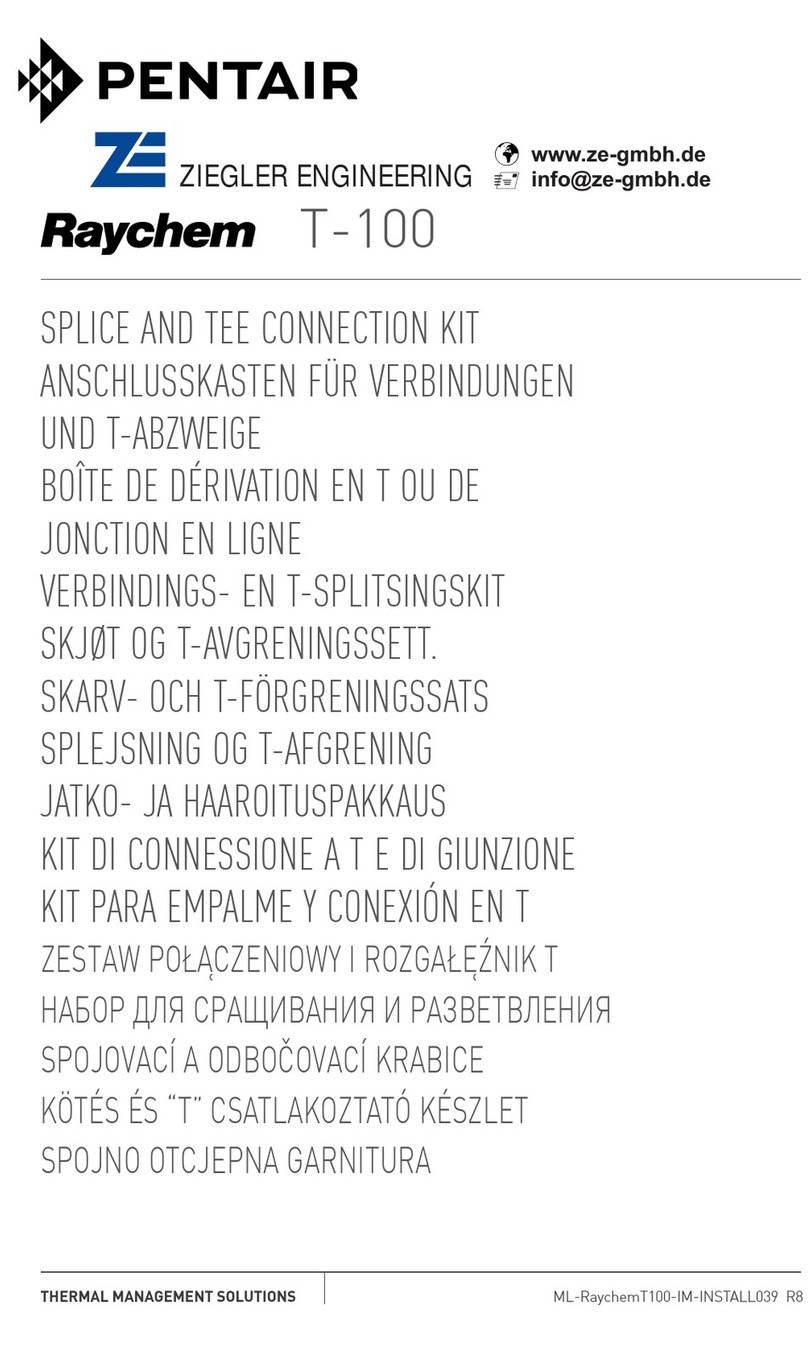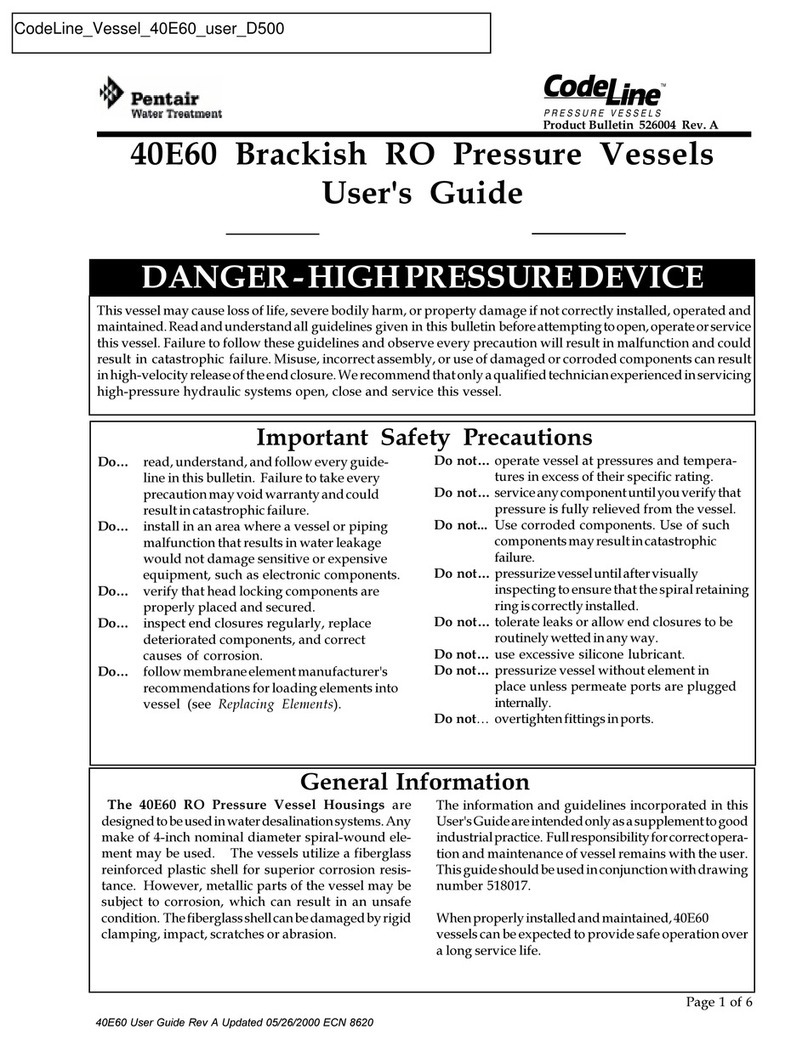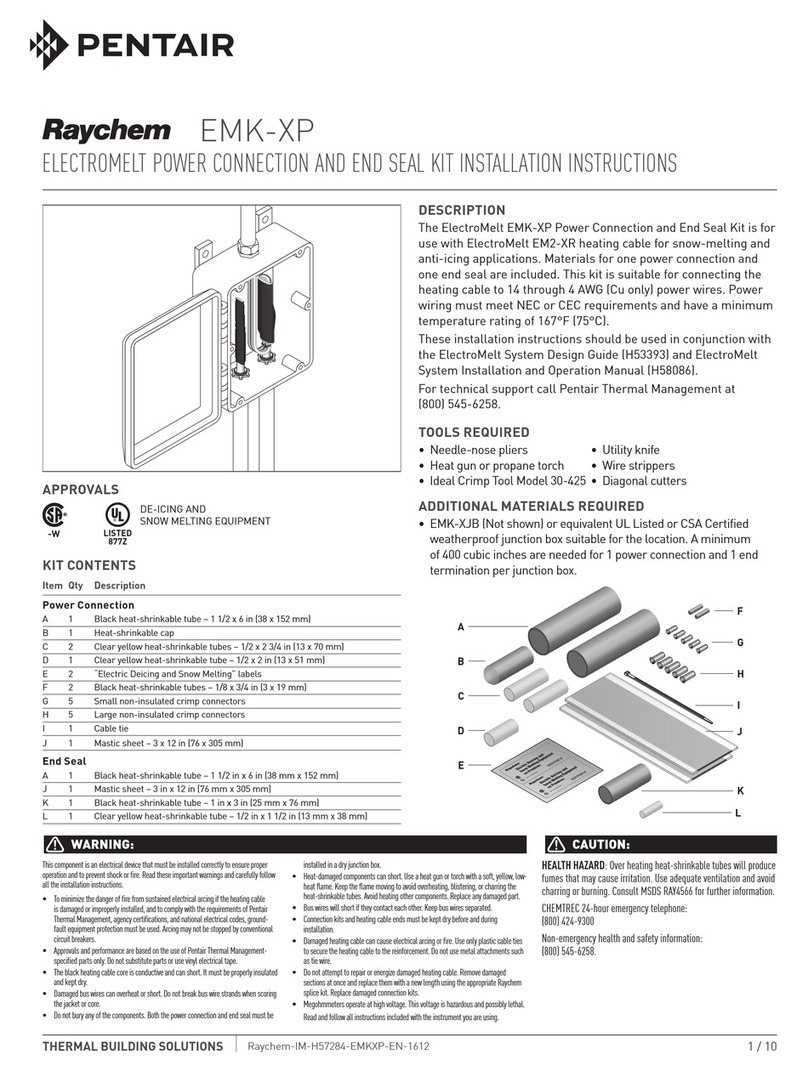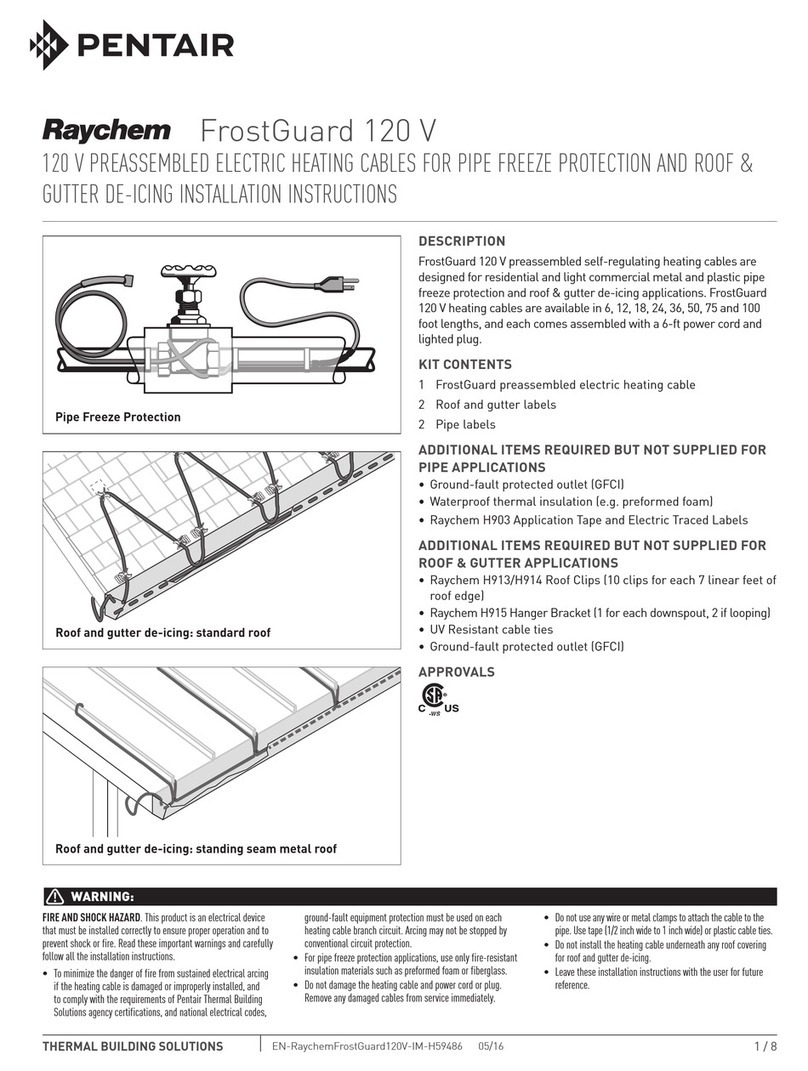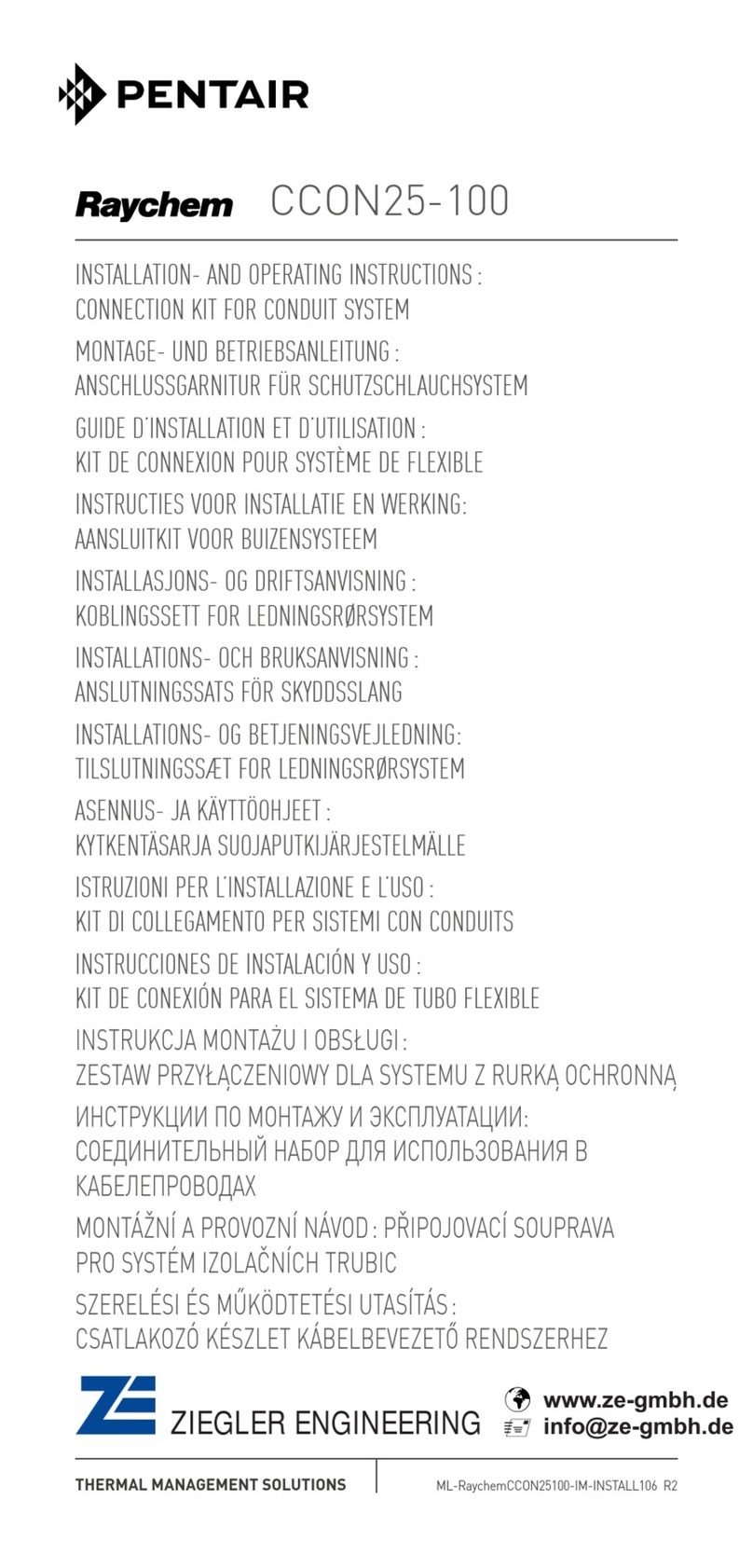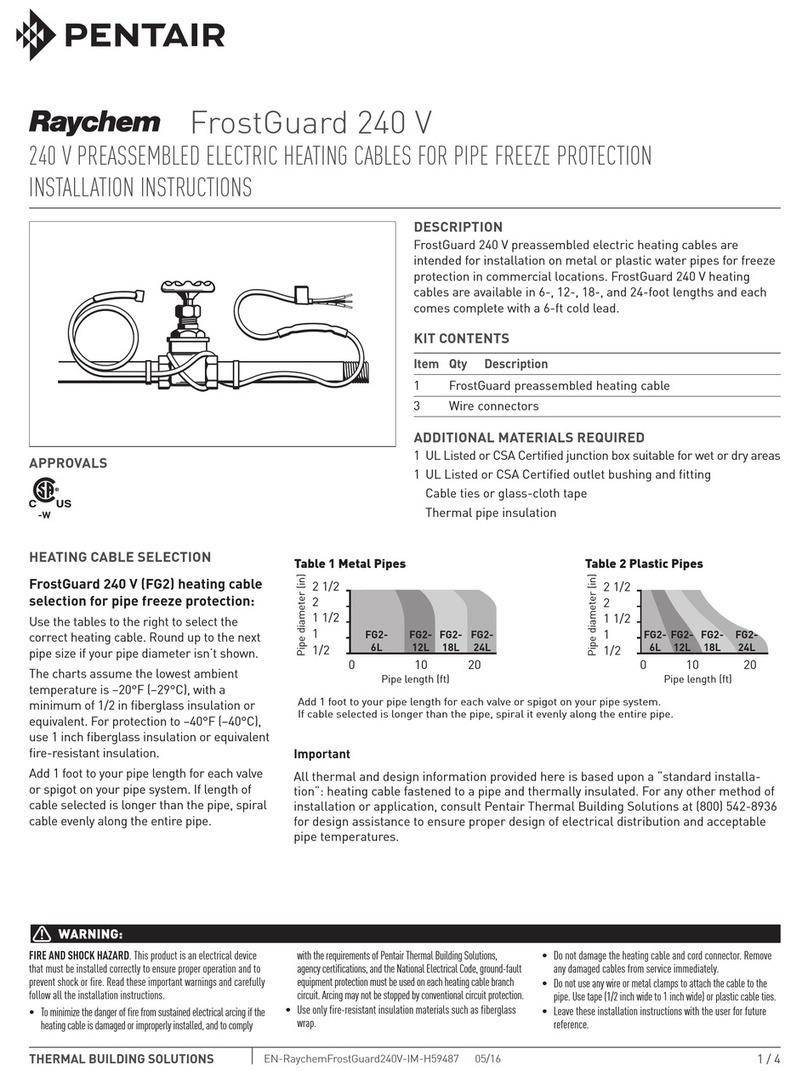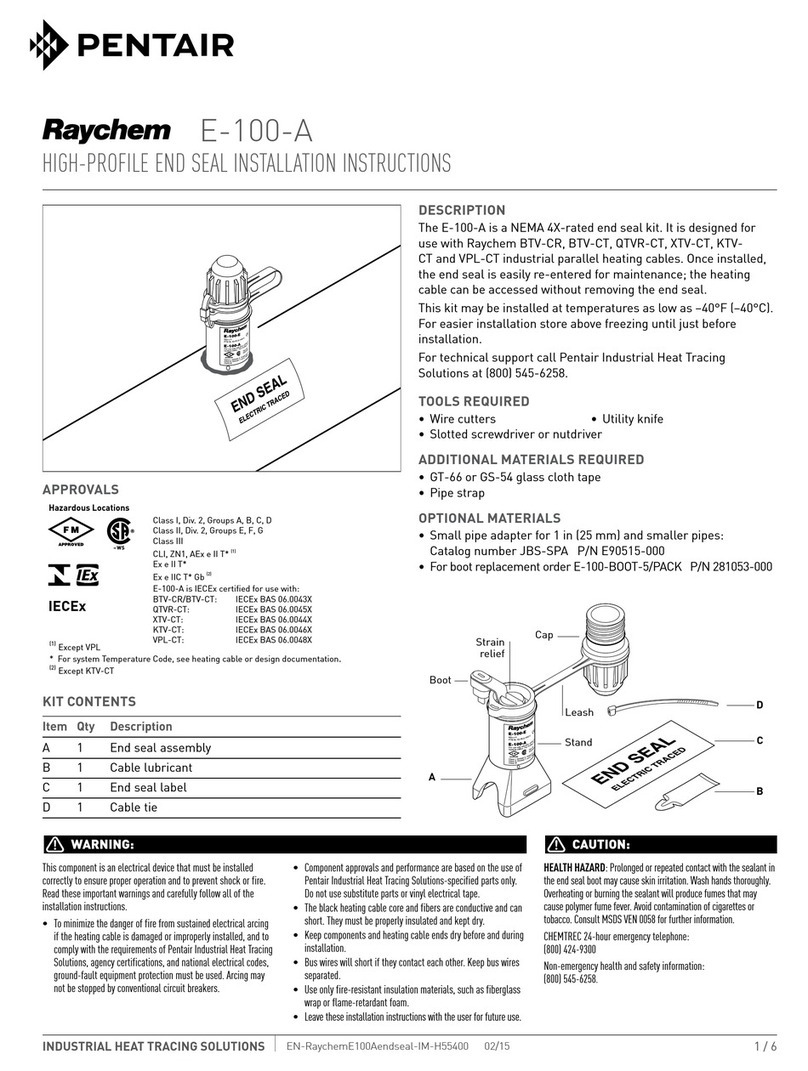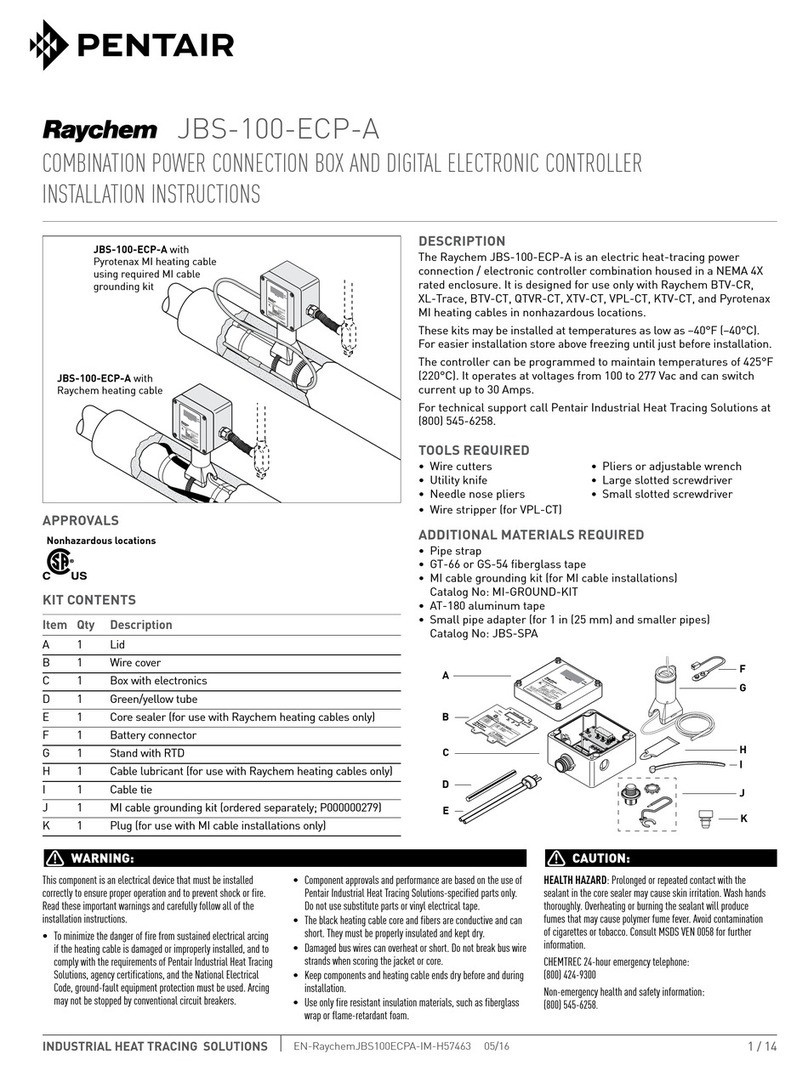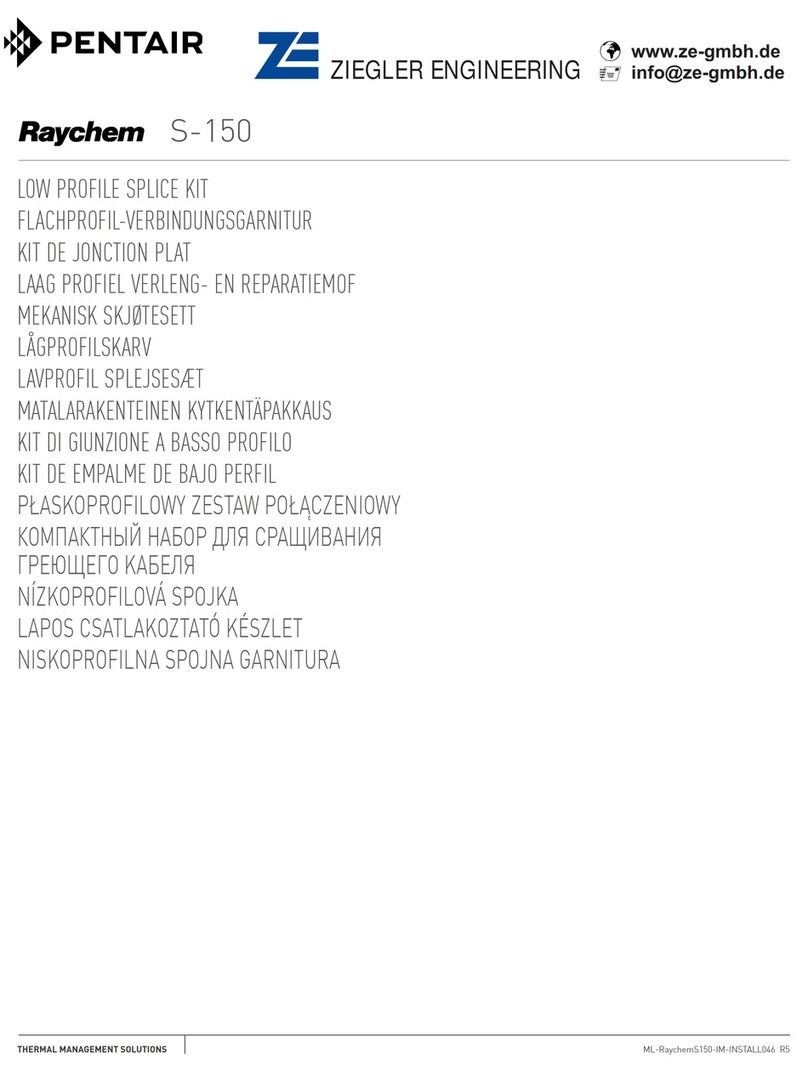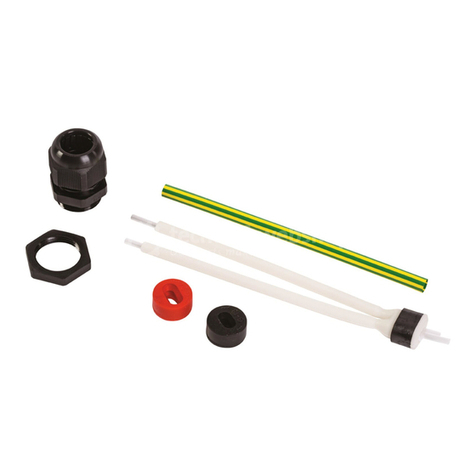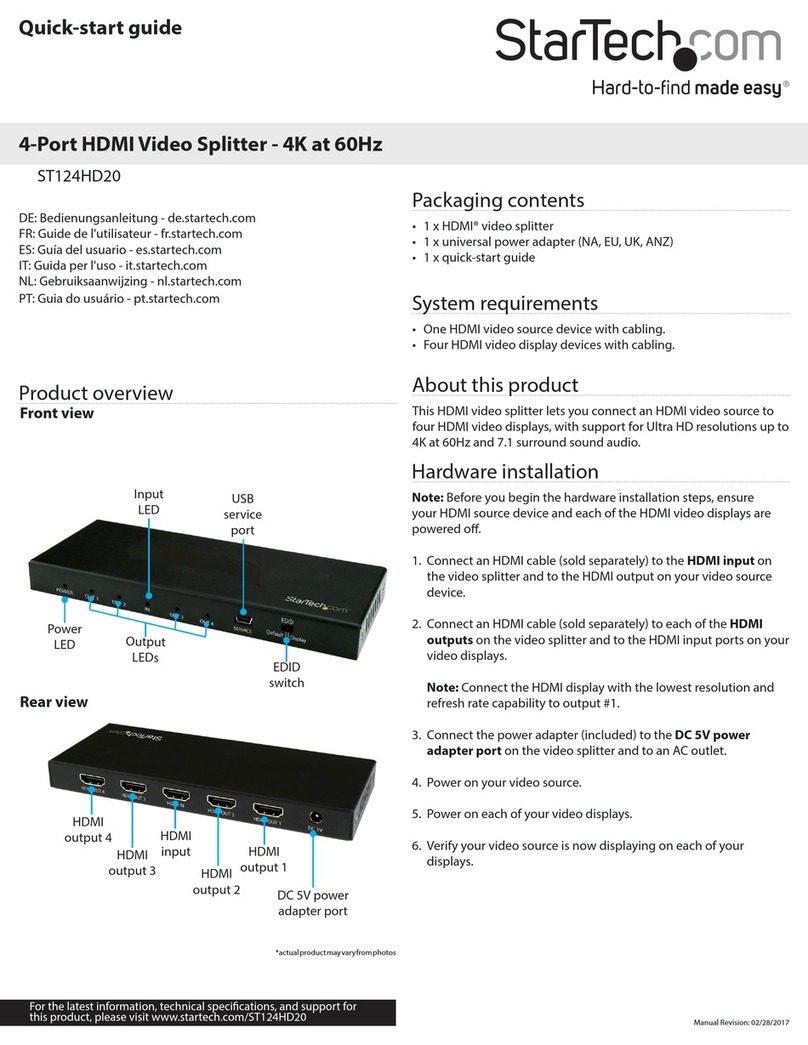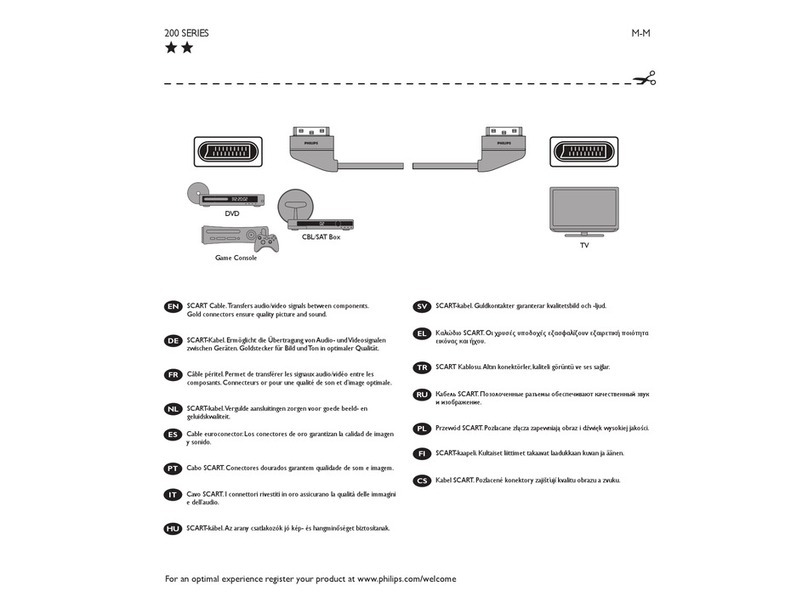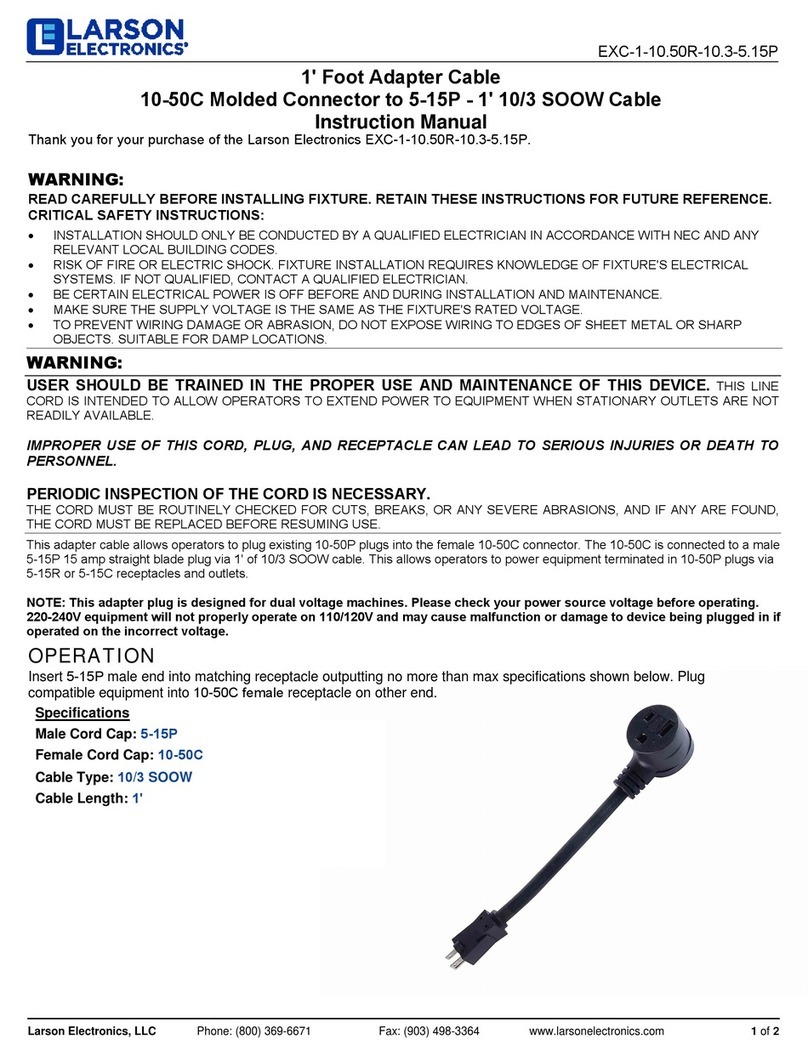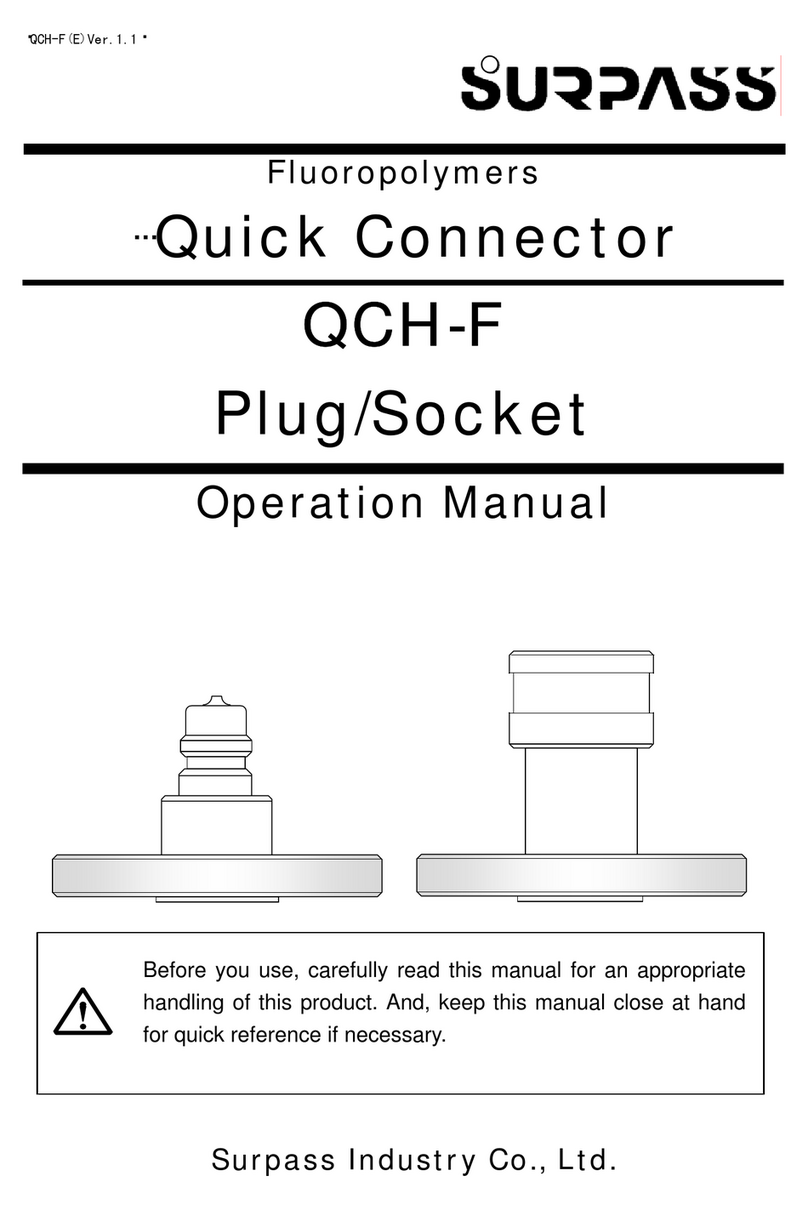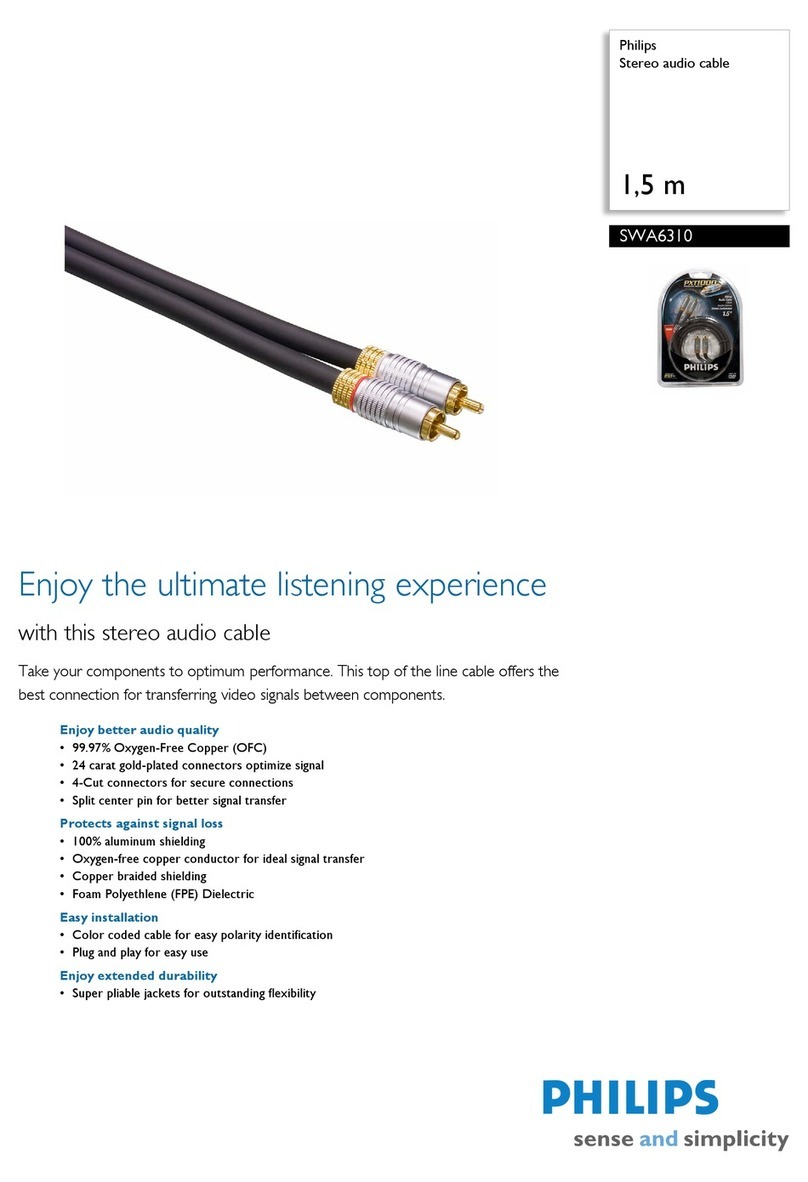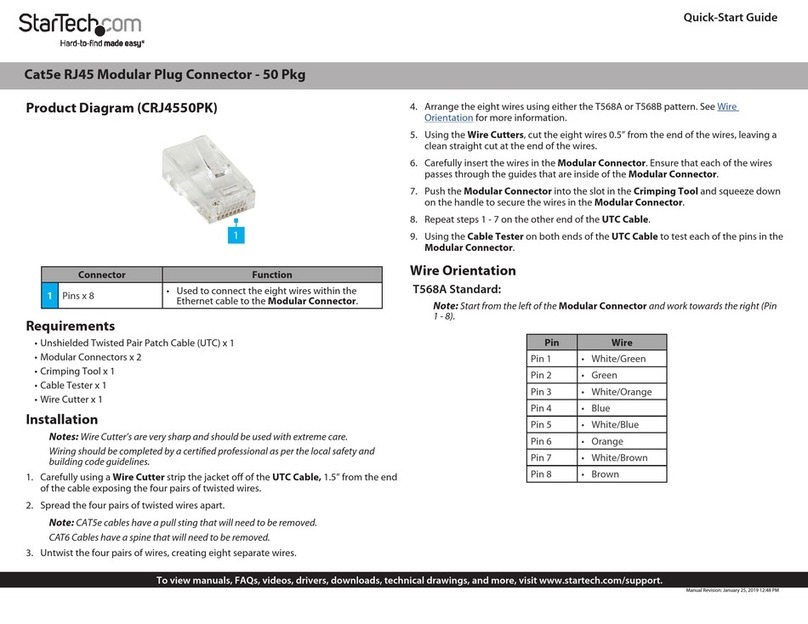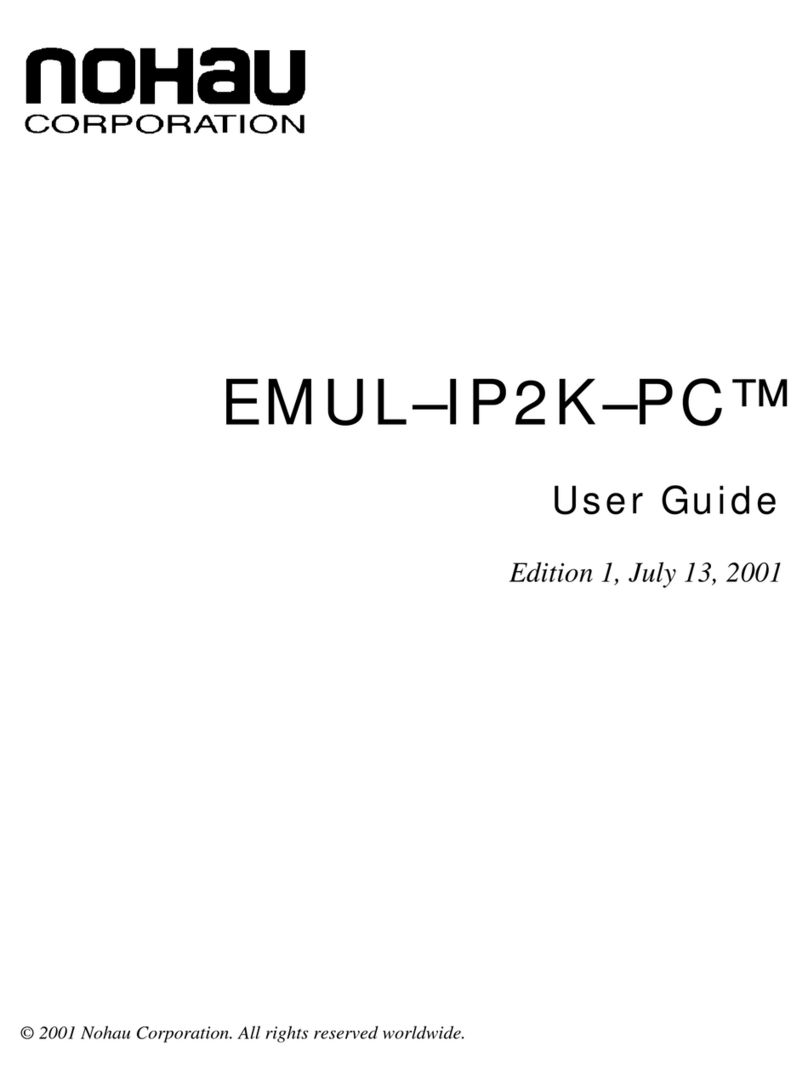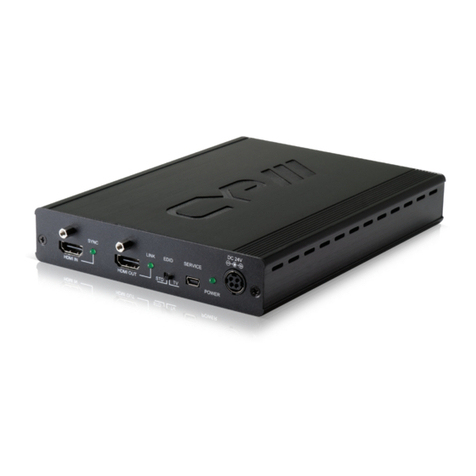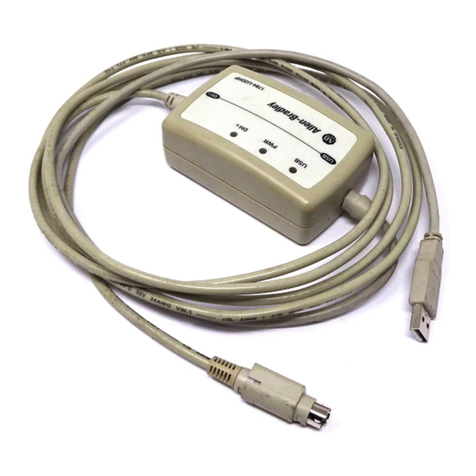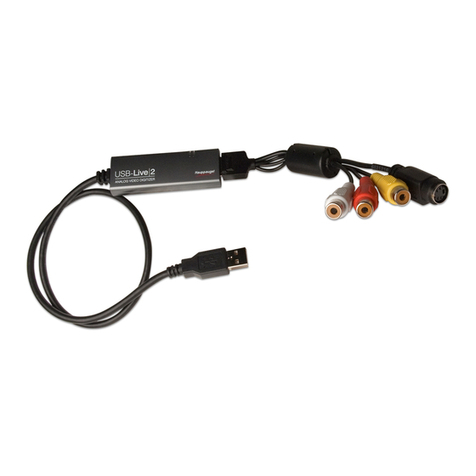
EN-TraceTekTT1100OHP-IM-H5826301/15
THERMAL BUILDING &
INDUSTRIAL HEAT TRACING SOLUTIONS
1 / 8
DESCRIPTION
These Instructions explain the proper procedures for installing and
testing TraceTek TT1100-OHP sensing cables. TT1100-OHP sensing
cables are primarily intended for use on overhead piping to detect a water
leak originating from a small pin hole or crack in the pipe. The wicking
action of the absorptive synthetic fiber outerbraid on the TT1100-OHP
cable can catch and hold a small drip or trickle of water– to ensure
sufficient wetted length to generate a leak alarm. TT1100-OHP can also
be used on floors, in drip pans, in sumps and trenches and similar flat
surface applications, however TT1000 standard water detection cable may
be better suited to flat surfaces.
Important Notes
When used to monitor suspended or rack mounted pipe, TT1100-OHP
sensing cables must be attached to the pipe at the lowest point where
any water leak is most likely to drip from the pipe system. This will be the
6 o’clock position on horizontal piping but other mounting locations and
techniques may be necessary if site conditions are unusual. In particular,
special consideration should be given to pipe supports, couplings, “T’s”,
valves and other fittings. It is the responsibility of the installer to position
the cable such that any leak will drip onto the cable.
The sensor cable cannot stop a leak. In some installations the materials
or structures beneath the pipe system may be so critical or valuable,
that a drip tray system should be considered in addition to the sensor
cable installation. TT1100-OHP is intended to alert the user that a pipe or
system is leaking but it cannot prevent collateral damage if the leak is not
contained and repaired immediately.
GENERAL NOTES: DO’S AND DON’TS:
TOOLS REQUIRED
Wire cutters Used to cut off tie wrap ends
TT-PTB-1000
(PN 486437-000)
Portable Test Box, battery powered instrument
designed for testing and troubleshooting TraceTek
systems
Digital multimeter Can be used as an alternative or supplement to the
PTB. Meter must have 20 MΩ range
TT-MAPPING CAP-PC
(PN P000000872)
Used to simulate leaks at connector points during
commissioning and mapping process
Extra TT-MLC-PC
(PN 683262-000)
Leader cable. Used with the ohmmeter to make
easier connections to the sensor cable for resistance
measurements
Extra TT-MET-PC
(PN 169905-000)
End termination. Used during installation or trouble
shooting to temporarily isolate a sub-section of sen-
sor cable for resistance measurements
ADDITIONAL MATERIALS REQUIRED
Tie wraps Supplied by installer and sized to go around the pipe
and sensor cable. Base quantity on one tie wrap per
foot (0.3 m) for horizontal run with extra wraps at
fittings.
Rags and appropriate
cleaner
Use to wipe and clean bottom and side surfaces of
pipe prior to cable installation.
OPTIONAL MATERIALS
TT-MBC-PC
(PN 847529-000)
Branch connector used to connect and branch "T"
lines
TT-MJC-xx-PC This jumper cable is available in various pre-cut and
terminated lengths
TT-1100-OHP-CK-PC-M/F
(PN P000001186)
Connector kit used during field connections of
TT1100-OHP bulk cable
DO:
•Storethecableinitsoriginalcontainerinaclean,dryareauntilreadytoinstall.
•Cleanthepipesurfacewherethecablewillbeinstalled.
•Schedulethesensorcableinstallationaslateaspossibleintheconstructionscheduletoavoidrisk
ofdamageorcontaminationbyothercontractorsorconstructiontasks.
•Removecablefromthepipeifanythreadcutting,welding,solderingorsimilarpipefittingworkwill
beperformed.
DON’T:
•Dragthecablethroughwater,paint,solvents,oilorothercontaminants.
•Installdamagedorcontaminatedsensingcable.
•Allowthecabletobecomewetorcontaminatedafterinstallation.
•Exceedthemaximumpullingforceof100kg(220lb).
•Usethecableasaropeforliftingorsecuringanyobject.
•Allowtoolsorheavyobjectstofalloncable.
•Exceed3300ft(1000m)sensorcablecircuitlength
TT1100-OHP
Water SenSing Cable for SuSpended pipe inStallation inStruCtionS
TRACETEK
